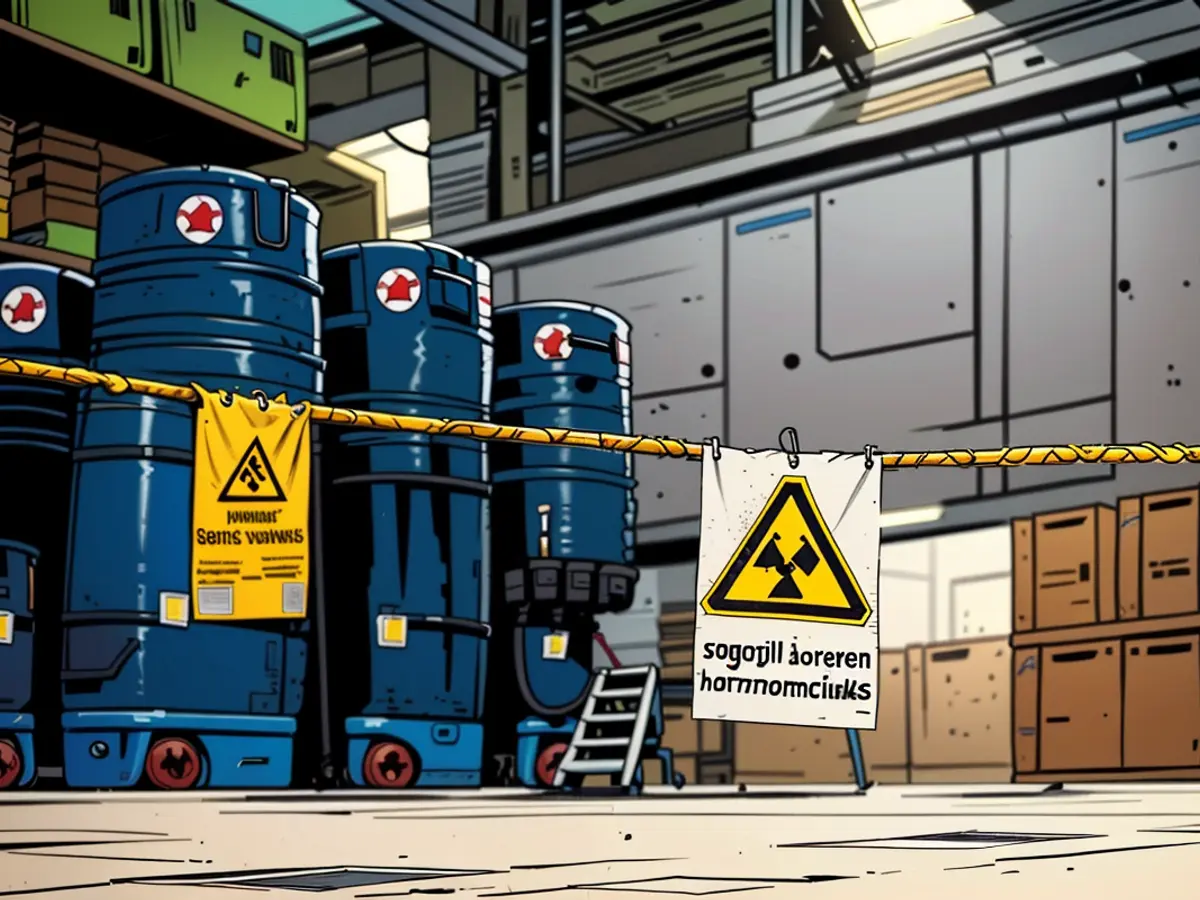"Our needs for final inventory surpass those in Finland significantly"
Germany has 36 deactivated and closed down nuclear power plants. Nevertheless, there's still no definitive location for the highly radioactive waste, as no one is eager to be labeled the "nuclear waste dump." This situation isn't projected to alter in the foreseeable future; even the search for a suitable site is forecasted to carry on until at least 2074, as per a recent study conducted by the Freiburg-based Öko-Institut for the Federal Office for Nuclear Waste Disposal (BASE). In the "climate lab" of ntv, expert Judith Krohn clarifies the prolonged delay: The repository is being sought across the entirety of Germany, necessitating the collection and analysis of "an enormous amount" of data and rock samples. Unlike Gorleben, the public is also involved in the selection process to ensure as many people as possible are satisfied. Could it be more practical to store the waste abroad?
ntv.de: Why is the hunting for a final repository taking so long? Didn't we have Gorleben years ago?
Judith Krohn: To some extent, yes. Gorleben was suggested as a potential site initially, but it was discovered later that the salt dome did not belong to the category of the best possible sites. As a result, a new process was devised. This includes commencing a search on a blank map of all of Germany, and then finding a site with the best possible safety on a scientific basis.
What was the issue with Gorleben?
Strong opposition and scientific reasons were behind it. The necessary minimum requirements for a potential final repository, such as depth, were met, and the suitable host rock was present. However, concerns about the geological suitability arose during comprehensive examination.
Could there be resistance from the public in the case of the new final repository candidates as well?
Therefore, public involvement is emphasized in the new selection process. It's involved from the outset. There's always an opportunity to educate yourself, contribute, and express your opinion. This is a transparent process aimed at achieving a result with high approval together.
Doesn't someone always resist in such cases? In your study, it's stated that under "ideal circumstances," a decision can be anticipated "at the earliest in 2074." This sounds as if you already know today that the search will be delayed again.
The target deadline for a decision is 2031 according to the Site Selection Act. However, numerous actors are involved in the procedure, and each step is time-dependent on the other. This hasn't been investigated by anyone before us. We were already aware that 2031 wouldn't be attainable. This is not only due to public participation but also the objective: We're searching for a site with the best possible safety for a million years, and this is being carried out in an open-ended process. Numerous investigations are necessary for this. We're currently still in the first of three selection phases.
What does this entail exactly?
In the first phase, every piece of data ever collected in the subsurface is gathered, prepared, compiled, and evaluated. Every drill hole made in Germany, regardless of who carried it out. The Bundesgesellschaft für Endlagerung (BGE) collects these data and determines by 2027 which sub-areas have the right host rock and could potentially be considered as a site. These are then investigated for their suitability.
Yes. We need to find an area that can withstand the negative impacts of radioactive waste beneath the ground. However, data isn't readily available in all places, and it hasn't been collected for potential final repositories in some instances. Therefore, information is missing in certain scenarios. This occurs during phases two and three: First, the rock is examined using simpler methods. In phase three, a mine, i.e., a pit, is excavated. It's also being discussed whether drilling can be used instead.
And this first phase, in which data is gathered and evaluated, ideally lasts only until 2027?
Exactly. The BGE has already published an interim report on this. The 90 areas are now being examined more closely.
Not exactly few.
No (laughs). That's why it takes so long. A large quantity of data from the various, often substantial, sometimes also small locations have to be processed and evaluated to determine maybe a small number of site regions for the exploration of the second phase. The BGE incrementally excludes areas that are less suitable for this.
Are you using the method of elimination until only one name remains?
In this safety investigation, areas are excluded. In the end, there will also be a kind of ranking of the most suitable sites. These will be handled further in the procedure.
Are all federal states participating this time? The CSU has represented the position in Bavaria for years: We support nuclear energy, but the final repository should be constructed elsewhere.
There are no restrictions at the moment, a large portion of the federal territory is in contention. Therefore, the reactions from the federal states have been relatively reserved so far. Whether this remains the case will be seen when it becomes evident which areas will be moved into the exploration phase. However, no federal state can halt the process because a law has been enacted for this procedure, which explicitly outlines how the site is to be determined.
And if your own federal state is selected, then you'll have to deal with it?
Yes.
Until that happens, several decades will pass. The German nuclear power plants are already shut down or decommissioned. Where is the nuclear waste currently stored?
In temporary storage facilities. A significant portion of it is located at the nuclear power plant sites, while some central temporary storage facilities also exist.
What's the argument for just leaving the nuclear rods in those temporary storage sites?
Leaving the nuclear rods out in the open in these temporary storage facilities isn't safe. We're dealing with extended periods of time during which they still release radiation and decay. No one can predict what the political, economic, or social situation will be like in a million years. Look at the Ukraine conflict as a reminder of how things can quickly turn sour. And as the name suggests, these temporary storage facilities are merely temporary solutions.
Aren't these temporary storage facilities inadvertently turning into permanent cemeteries for nuclear waste? At present, we don't have any permanent solutions, so the nuclear waste stays there longer and longer, longer than planned. And whether we stick to the timeline this time, who knows? "By 2074 under ideal conditions," says your report.
They become permanent cemeteries only if the process fails. But I can't imagine that happening. It's our collective responsibility to find a solution for this waste and not shift it to the next generations.
We Germans tend to push our problems onto the next generations.
Yes, that's true. But with this site selection process, we've developed a way for the first time that potentially leads to a reasonable outcome. In the end, we have no choice.
Couldn't we transport the waste abroad? Finland started the world's first repository a few years back. The idea of hosting foreign nuclear waste – for a hefty price, of course – is a recurring topic in Finland.
It's not a sensible option. It's our responsibility to find a repository. Every argument points towards it being possible in Germany. Our requirements are also much stricter than in Finland: For instance, the waste has to be retrievable if something goes wrong. There's no good reason to transport nuclear waste to other countries if we can find a site with optimal safety for a million years within Germany.
Christian Herrmann spoke with Judith Krohn. The conversation was condensed and simplified for better understanding. You can hear the full conversation in the podcast "Climate Lab".
Despite Germany having 36 deactivated and closed down nuclear power plants, there's still no definite location for the nuclear waste due to public resistance and scientific concerns. According to a recent study, the search for a suitable site for nuclear waste end-of-life storage could continue until at least 2074.
During the selection process for a final nuclear waste repository, public involvement is emphasized to ensure as many people as possible are satisfied. The Bundesgesellschaft für Endlagerung (BGE) is currently in the first phase of the selection process, where every piece of data ever collected in the subsurface is gathered, prepared, compiled, and evaluated to determine potential site regions.







